Image Archive




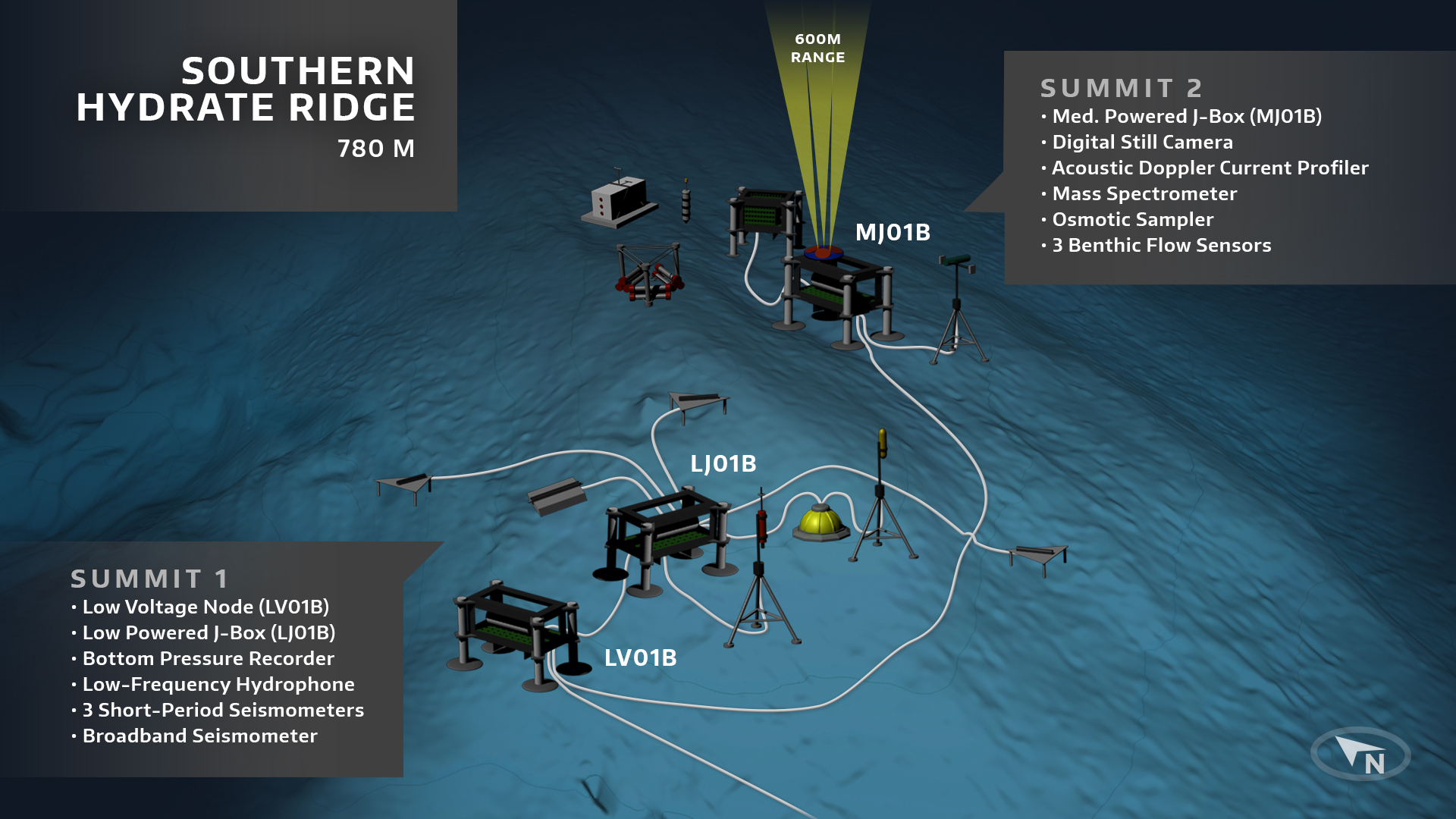

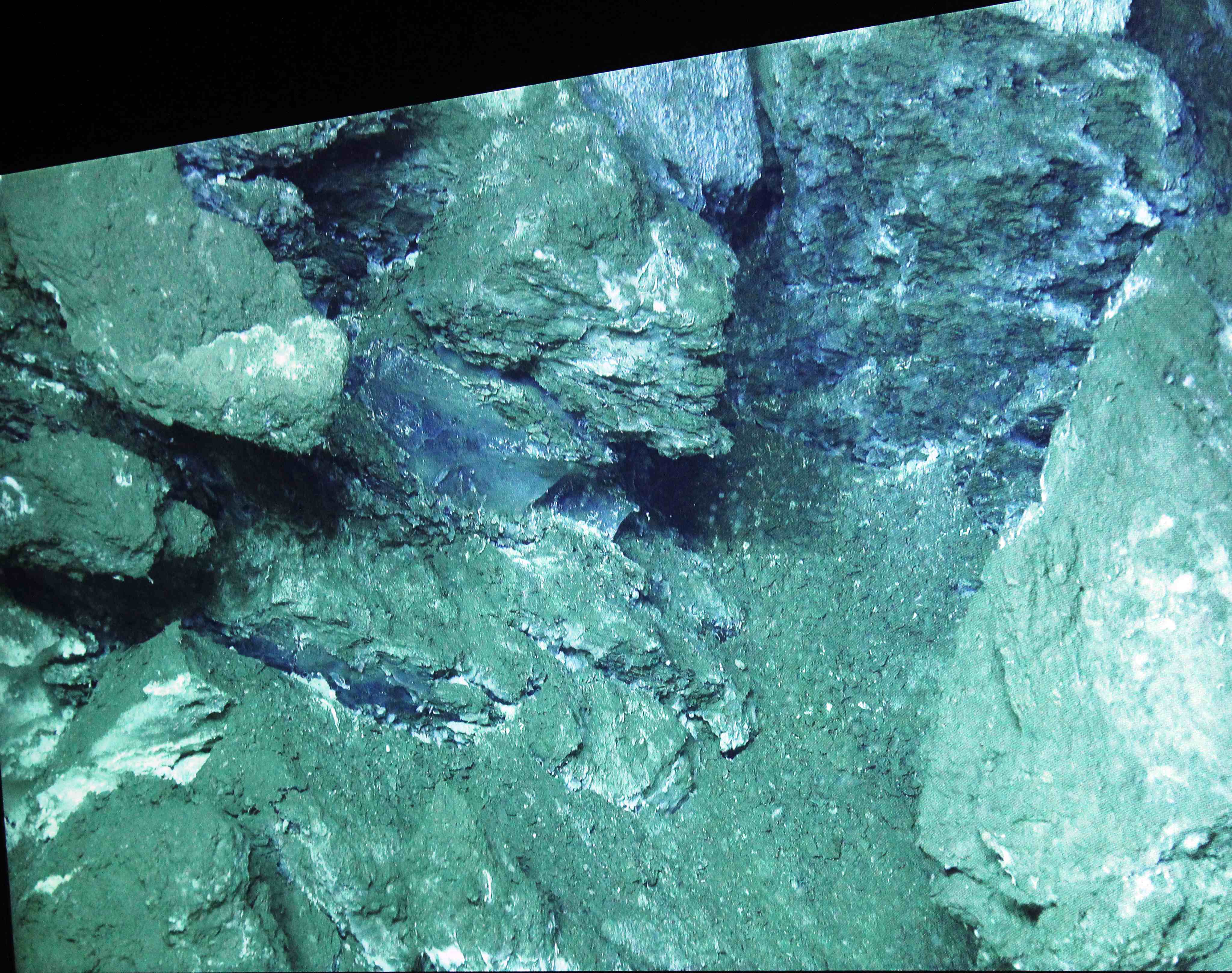
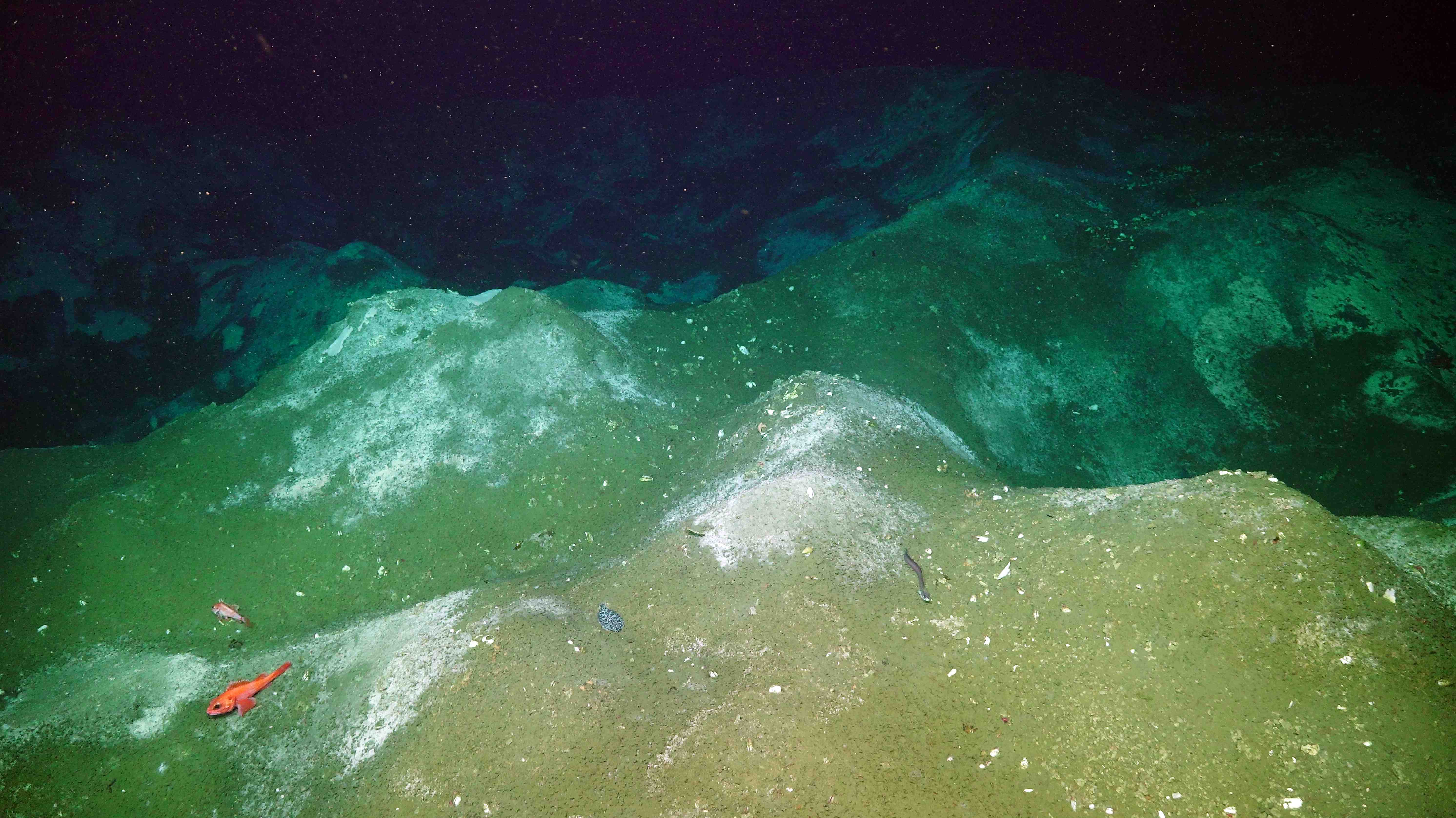

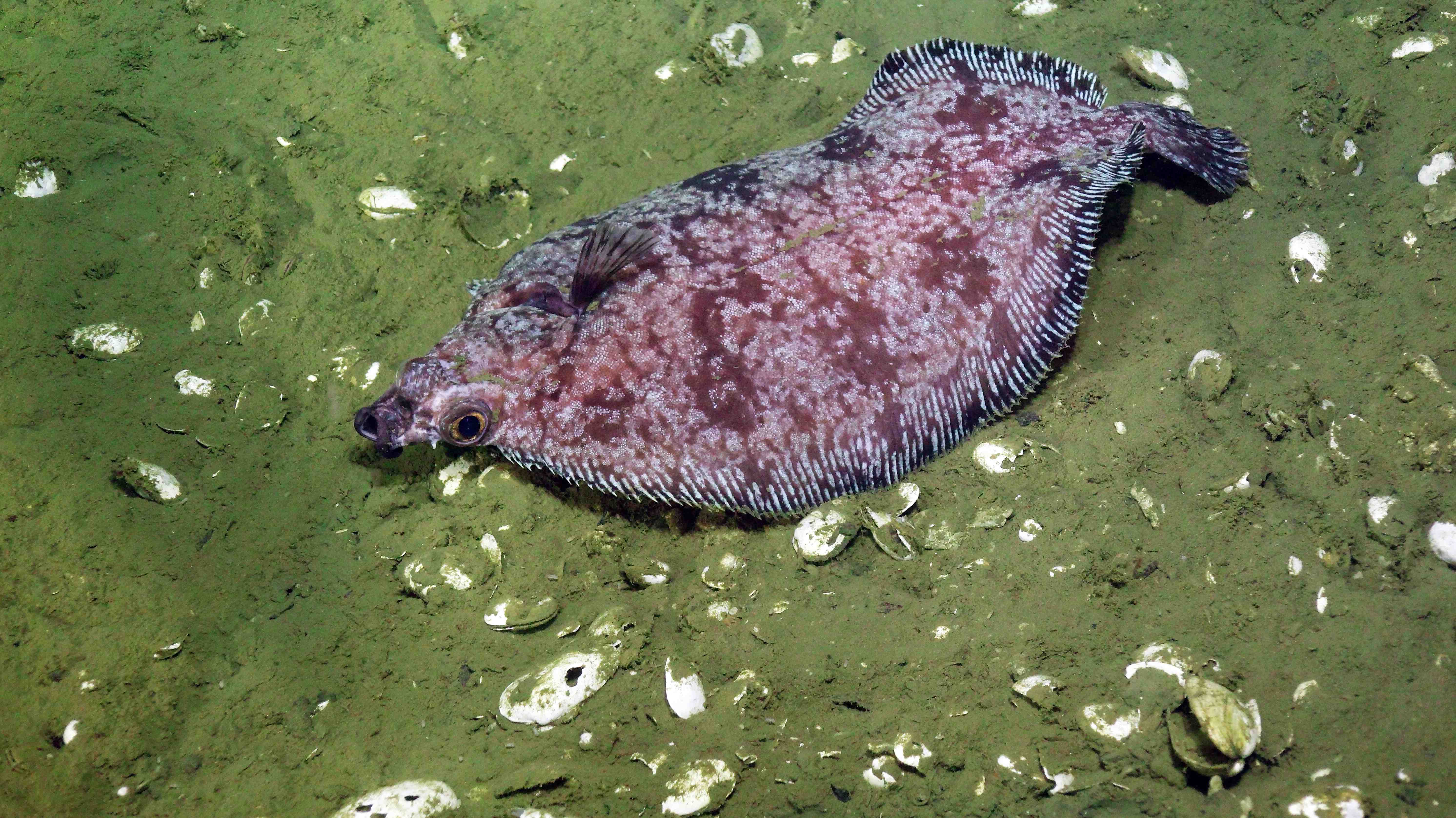







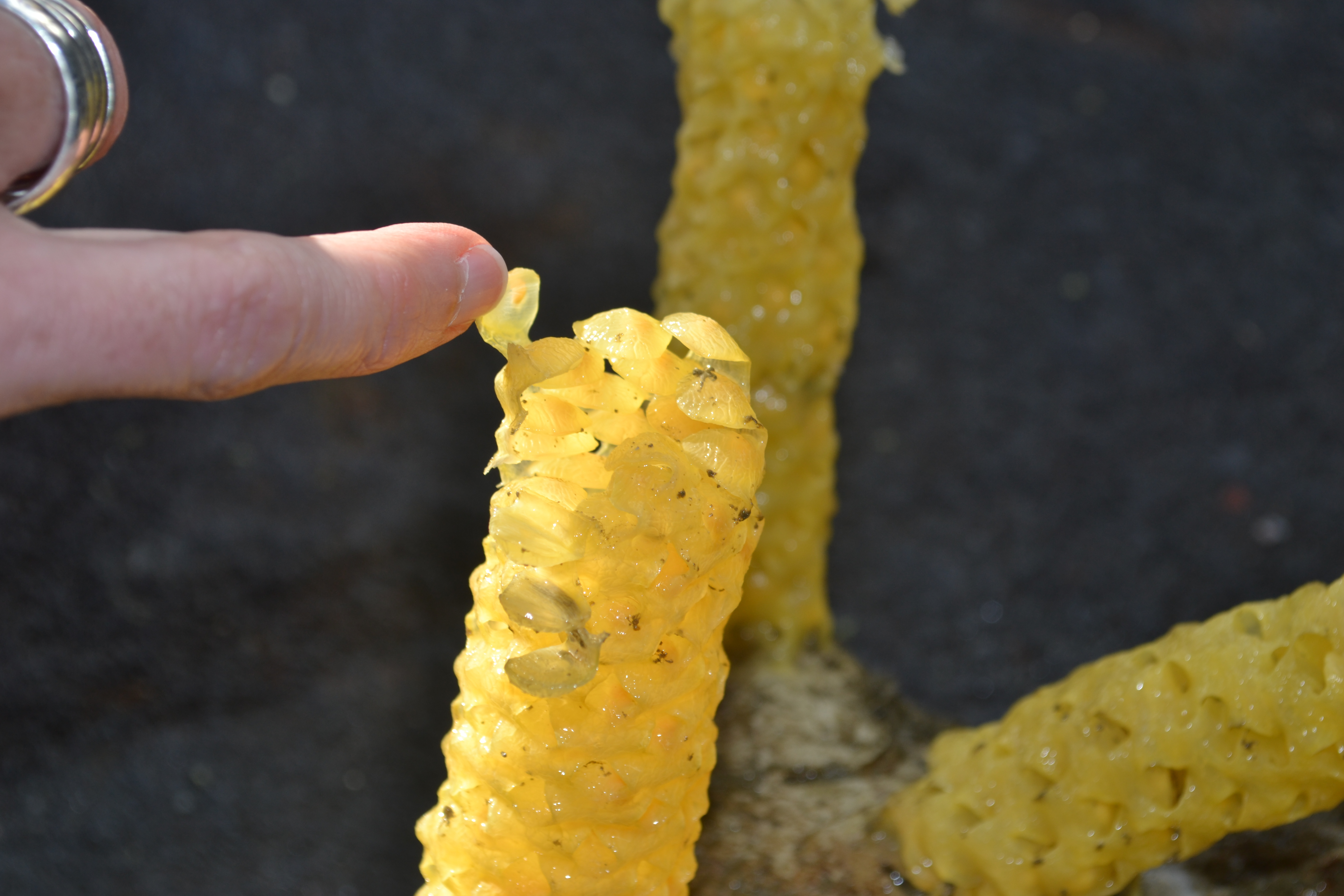







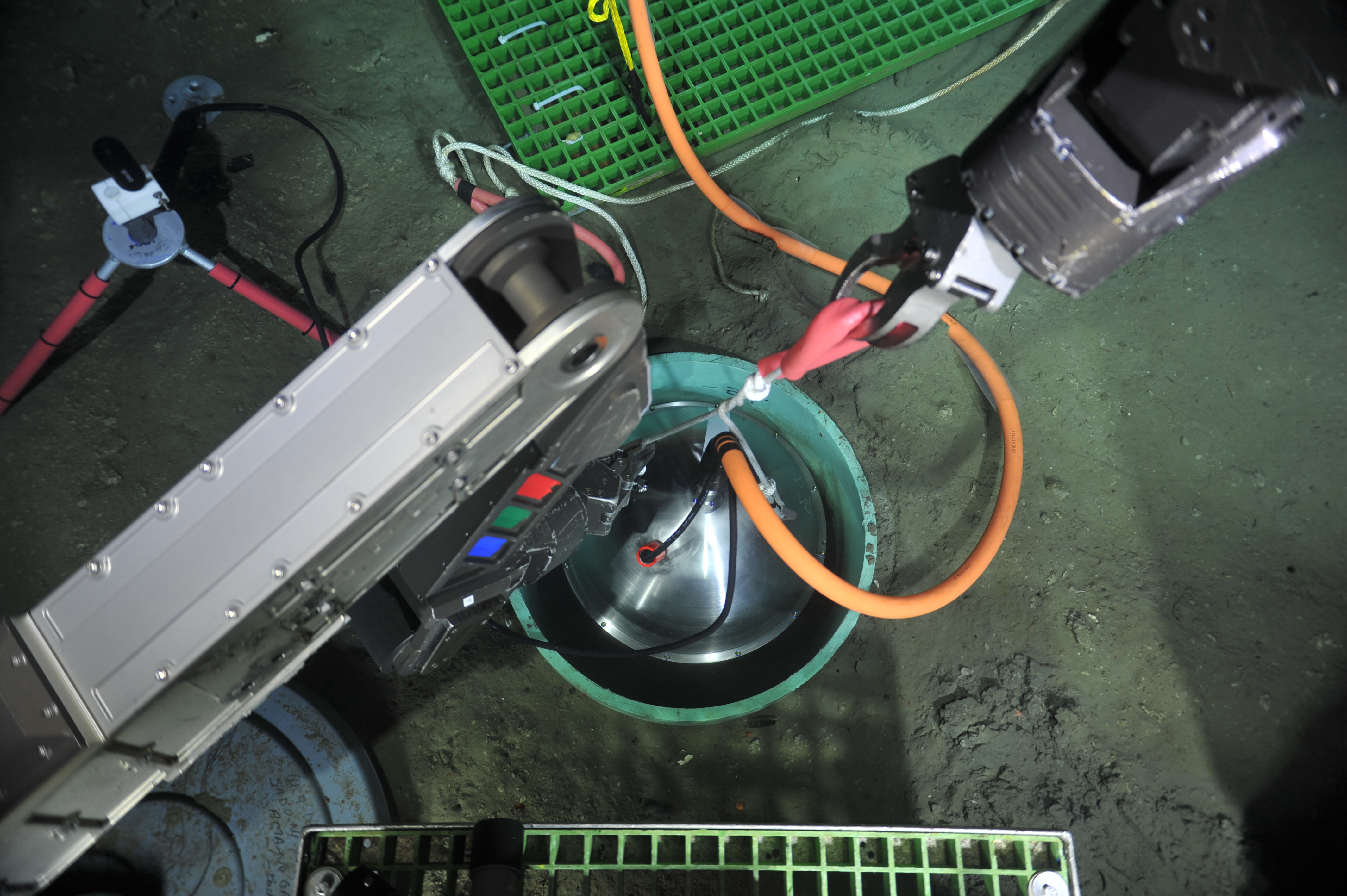

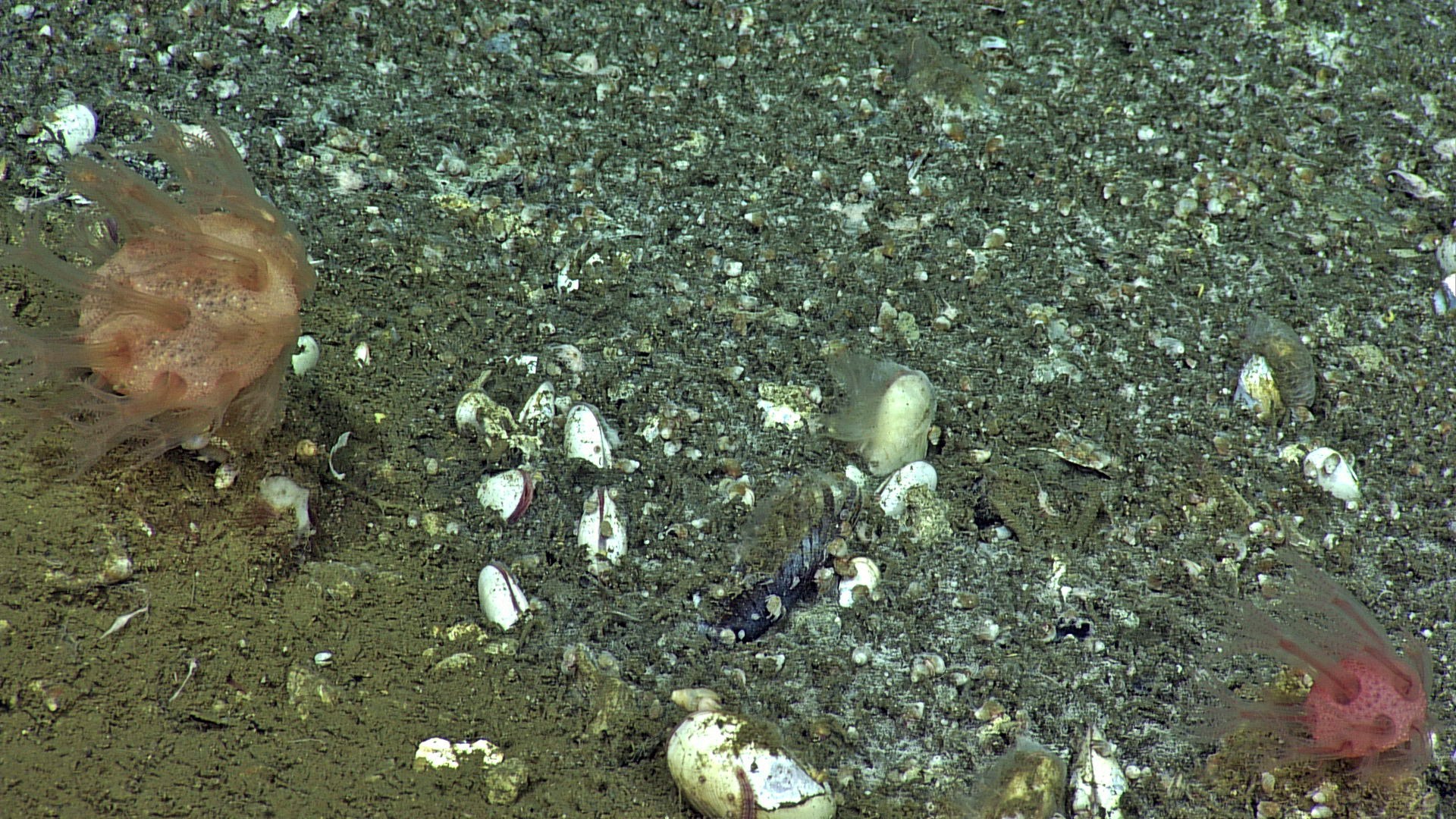

A skate rests in the sediment at Southern Hydrate Ridge. This area is also home to snails, rockfish, crabs, anemones, starfish, and soft corals. Credit: UW/NSF-OOI/WHOI: J2-1542; V23.

Purple hagfish, speckled sole, red rockfish, starfishn and crabs thrive at Southern Hydrate Ridge with diverse substrates to call home. Credit: UW/OOI-NSF/WHOI. V20.

A rockfish hangs out with soft corals at the carbonate Pinnacle deposit at Southern Hydrate Ridge. Credit: UW/NSF-OOI/WHOI. V20.

A sole lounges on the sedimented seafloor at Southern Hydrate Ridge. Credit: UW/NSF-OOI/WHOI. V20

so-hydrate

An overview sonar being installed at Southern Hydrate Ridge - the multibeam's "head" is in the down position, prior to completion of the installation. Credit: UW/NSF_OOI/MARUM, V19.

A photo from the Jason van screen showing exposed methane hydrate at Einsteins's Grotto - the first time we have observed it there.

Once again the Smokey Caverns (or Taverns as it is also known) has changed remarkably since we visited it with Jason last year. The area is significantly more rugged, marked by large hummocks. An eelpout, sole, clams and orange rock fish dot the landscape. Credit: UW/NSF-OOI/WHOI, V18.

An old Ocean Drilling Program hole serves as a nursery for hagfish and crabs at the summit of Southern Hydrate Ridge. Credit: UW/NSF-OOI/WHOI, V18.

A deep sea sole, surrounded by clam shells at Southern Hydrate Ridge (~ 800 m water depth). Credit. UW/NSF-OOI/WHOI, V18.

Collage of photos taken from screens in the control van showing microbial mats, hagfish, rockfish, flounders, shells chaff, clam, carbonate cobbles and methane seeps observed at Southern Hydrate Ridge. B-Y. Lee, University of Washington, V18.

The roughtail skate has a broad nose and sharp scales on the surface. Roughtail skates are around 91 cm in length. This skate was seen at Southern Hydrate Ridge. Credit: UW/NSF-OOI/CSSF; ROPOS Dive 1777; V14.

Neptune Canada’s guide included it in the “sea anemone” category because of similarity, but it belongs to another order: Corallimorpharia. This Corallimorph anemone was spotted on the seafloor at Southern Hydrate Ridge at a depth of 774 m.

The vibrant Neptunea nursery that was covered in bright yellow egg stalks topped with Neptunea snails is not longer active. Only casings and empty shells remain. Credit: UW/OOI-NSF/WHOI; J2-981; V17.

The Pinnacle, on the west of the main methane seep sites at Southern Hydrate Ridge, is a 60 m tall, rugged carbonate edifice teaming with life - dominated by high densities of soft corals, hagfish, and small squat lobsters that hide in small cavities. Credit: NSF-OOI/UW/ISS, V15.

A red jellyfish (Poralia rufescens) at Southern Hydrate Ridge undulates past the ROV ROPOS near the carbonate pinnacle site during Dive R1851. Credit: UW/NSF-OOI/CSSF; V15.

A rockfish and a pedicellasterid starfish (possibly Ampheraster sp.) are intermixed with clams near a bacterial mat on the methane seep site, Southern Hydrate Ridge during ROPOS Dive R1850. Credit: NSF-OOI/UW/CSSF, V15.

A close up of a beautiful stalk of Neptunea snail eggs recovered from Southern Hydrate Ridge. Credit: Mitch Elend, University of Washington, V15.

The Neptunea nursery in 2015 was devoid of tending snails on top of the egg stalks. Recovery of the stalks showed that the eggs are still viable. Credit: NSF-OOI/UW/ISS, Dive R1845, V15.

Deb brings in a recovered carbonate cobble with egg casings of Neptunea snails from Southern Hydrate Ridge. The eggs can take up to 1 year to hatch. Credit: Mitch Elend, University of Washington, V15.

A before and after image of the fantail on the R/V Thompson the day we left port (August 26) and came back (September 10). In between these two port calls, we came back into Newport and loaded another complete set of gear to install on the seafloor. Photo Credit: Mitch Elend, University of Washington, V14.

The ROV ROPOS samples jets of methane bubbles with a hand-held Niskin bottle. Photo credit: NSF-OOI/UW/CSSF; Dive R1784; V14.

The manipulator arm of the ROV ROPOS reaches for a small block of methane hydrate wedged against a small rampart and nearly vertical wall within a large collapsed area at the summit of Southern Hydrate Ridge. Several minutes after sampling this site with the ROV, a continuous jet of methane bubbles issued from the large opening to the right of the hydrate sample. The methane hydrate is translucent, very clean and is reminscent of quartz with a conchoidal-like fracture pattern and is partially encased in a thin skin of sediment. Credit: UW/NSF-OOI/CSSF; ROPOS Dive R1784; V14.

Mola mola, a sunfish, are the heaviest known bony fish. They can weigh ~2000 lbs - they mainly eat jellyfish. Credit: Billy Medwedeff, University of Washington; V14.

Soft corals dot the rough carbonate surfaces of the ~ 60 m-tall limestone monolith west of the active seeps at Southern Hydrate Ridge. Credit: UW/NSF-OOI/CSSF; ROPOS Dive R1779; V14.

A broadband seismometer installed inside a buried cassion at Southern Hydrate Ridge by the ROV ROPOS. A follow-on dive will fill the caisson with silica beads, which dampens noise. The broadband and low frequency hydrophone is installed here to detect both large and small earthquakes that may impact the release of methane gas into the hydrosphere. Credit: UW/NSF-OOI/CSSF; ROPOS Dive R1779; V14.

An ~60 m tall carbonate pinnacle, west of the active seep site at Southern Hydrate Ridge, hosts abundant soft pink corals and is a rich habitat for squat lobsters, clams, a variety of fish, and crabs. Credit: UW/NSF-OOI/CSSF; Dive R1779; V14.

Soft corals bend in the currents at the edge of a bacterial mat. Here, live clams with symbionts thrive in the methane and hydrogen sulfide-rich fluids. Credit: UW/NSF-OOI/CSSF; ROPOS Dive R1773; V14.
- Anemone
- Animal
- Arthropod
- ASHES
- Axial
- Axial Base
- Axial Biology
- Axial Caldera
- Bacteria
- Basalt Lava
- BEP
- Biofouling
- biolgoy
- Biology
- Camds
- Camera
- Camhd
- Central Caldera
- Ciliates
- Cnidaria
- Coastal Biology
- Crab
- Deep Profiler Mooring
- Dive Highlights
- Eastern Caldera
- Echinoderms
- Endurance Array
- Engineering Team
- ENLIGHTEN 10
- Exploratorium
- Fish
- Geology
- HD Camera
- HPIES
- Hydrate Ridge
- Hydrates
- Hydrophone
- Hydrothermal Vents
- Illustration
- Inshore 80 Meters
- Instrument
- International District
- J-BOX
- Jason
- Jellyfish
- Junction Box
- K12
- Lava
- Mollusk
- Moorings
- Nodes
- Nudibranch
- Octopus
- OOI
- Oregon Offshore
- Oregon Offshore 600 m
- Oregon Shelf
- Oregon Slope Base
- People
- PN1B
- PN1D
- Polychaetes
- PPSDN
- Primary Node
- RASFL
- ROCLS
- ROPOS
- ROPOS Dives
- ROV Team
- RV Revelle
- RV Sikuliaq
- RV Thompson
- Salp
- Sample
- SC13
- Science Team
- Sea Cucumber
- Sea Star
- Sea Urchin
- Seafloor
- Seismometer
- Sensors
- Shallow Profiler Mooring
- Shark
- Shipboard
- Shore Station
- Slope Base
- Smoker
- Soft Coral
- Southern Hydrate Ridge
- Sponge
- Squid
- Students
- Students & Guest Participants
- Tmpsf
- Tubeworms
- VISIONS 11 Leg 1
- VISIONS 11 Leg 2
- VISIONS 11 Viewers
- VISIONS 13
- VISIONS 14
- VISIONS 15
- VISIONS 16
- VISIONS 17
- VISIONS 18
- VISIONS 20
- VISIONS 22
- VISIONS 23
- Visualization
